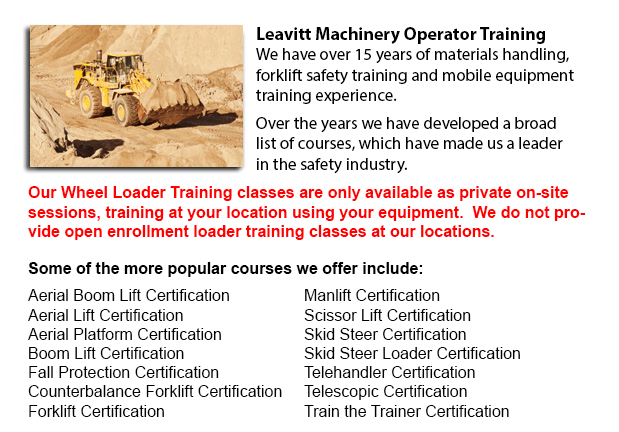
Lift trucks are available in a variety of different units that have various load capacities. The majority of average lift trucks used inside warehouse environment have load capacities of one to five tons. Bigger scale models are utilized for heavier loads, like for example loading shipping containers, may have up to 50 tons lift capacity.
The operator could utilize a control so as to raise and lower the tines, which may also be referred to as "blades or tines". The operator of the forklift could tilt the mast to be able to compensate for a heavy loads propensity to tilt the blades downward. Tilt provides an ability to work on uneven surface as well. There are annual competitions for skilled forklift operators to compete in timed challenges as well as obstacle courses at local forklift rodeo events.
General use
All forklifts are rated for safety. There is a particular load limit and a specific forward center of gravity. This vital information is supplied by the manufacturer and located on the nameplate. It is vital cargo do not exceed these specifications. It is against the law in many jurisdictions to tamper with or remove the nameplate without obtaining consent from the lift truck manufacturer.
Most forklifts have rear-wheel steering in order to increase maneuverability. This is very helpful within confined areas and tight cornering areas. This particular type of steering differs quite a bit from a driver's initial experience along with various vehicles. In view of the fact that there is no caster action while steering, it is no necessary to apply steering force to be able to maintain a constant rate of turn.
Unsteadiness is another unique characteristic of lift truck utilization. A continuously varying centre of gravity takes place with each movement of the load amid the lift truck and the load and they should be considered a unit during operation. A lift truck with a raised load has gravitational and centrifugal forces that could converge to cause a disastrous tipping accident. So as to prevent this possibility, a forklift must never negotiate a turn at speed with its load raised.
Forklifts are carefully made with a cargo limit utilized for the tines. This limit is decreased with undercutting of the load, which means the load does not butt against the fork "L," and also lowers with fork elevation. Generally, a loading plate to consult for loading reference is positioned on the lift truck. It is dangerous to use a lift truck as a personnel lift without first fitting it with certain safety equipment like for example a "cherry picker" or "cage."
Lift truck utilize in distribution centers and warehouses
Lift trucks are an important part of distribution centers and warehouses. It is vital that the work situation they are situated in is designed to accommodate their safe and efficient movement. With Drive-In/Drive-Thru Racking, a lift truck has to go in a storage bay that is several pallet positions deep to set down or take a pallet. Operators are often guided into the bay through rails on the floor and the pallet is located on cantilevered arms or rails. These confined manoeuvres require well-trained operators in order to carry out the job efficiently and safely. In view of the fact that each pallet needs the truck to go into the storage structure, damage done here is more common than with other types of storage. If designing a drive-in system, considering the size of the fork truck, including overall width and mast width, must be well thought out in order to be certain all aspects of an effective and safe storage facility.
-
Oshawa Scissor Lift Operator Certification
Oshawa Scissor Lift Operator Certification - North American regulators recommend that worksites need operators of scissor lifts, booms or aerial work platforms to obtain certification training. Scissor lift operator certification is not mandatory, bu... More -
Narrow Aisle Forklift / Order Picker Training / Electric Pallet Jack / Electric Pallet Truck Training in Oshawa
A pallet lift is a model of equipment dedicated in the moving of pallets of many dimensions and weights. They might be utilized as an appendage for platform lifts, cranes and other types of heavy machinery or be applied on their own. Pallet hoists ar... More -
Oshawa Crane Operator Certification
Oshawa Crane Operator Certification - The process to permit people to be able to operate certain kinds of cranes is to take crane operator certification training to get certification. The certification process incorporates classroom learning, hands-o... More -
Oshawa Aerial Platform Training
Oshawa Aerial Platform Training - Aerial platform lifts might be utilized to accomplish a lot of unique tasks executed in hard to reach aerial places. A few of the odd jobs associated with this style of lift include performing routine repair on build... More -
Oshawa Forklift Certification Schools
Oshawa Forklift Certification Schools - Forklift Certification is mandatory within North America. Hence, forklift training programs are important both for companies and for people seeking jobs in industries as forklift operators. Forklift training fo... More -
Oshawa Heavy Equipment Ticket
Oshawa Heavy Equipment Ticket - Depending on the nature of the job at hand, the type of construction equipment that a heavy equipment operator makes use of varies. Each and every type of machine is built to perform specific jobs in the most effective... More -
Oshawa Heavy Equipment Certification
Oshawa Heavy Equipment Certification - Large pieces of machines and heavy-duty vehicles are usually known as heavy equipment. This broad term includes utility vehicles from forestry and agricultural implements to civil engineering vehicles, construct... More -
Oshawa Overhead Crane Safety Training
Oshawa Overhead Crane Safety Training - The overhead crane safety training program is meant to equip the operators with the right skills and knowledge in the areas of: crane safety precautions, accident avoidance, materials handling, and equipment an... More

Forklift Certification Oshawa
TOLL FREE: 1-888-254-6157
Oshawa, Ontario
forkliftcertificationoshawa.com
Email Us
About Us


